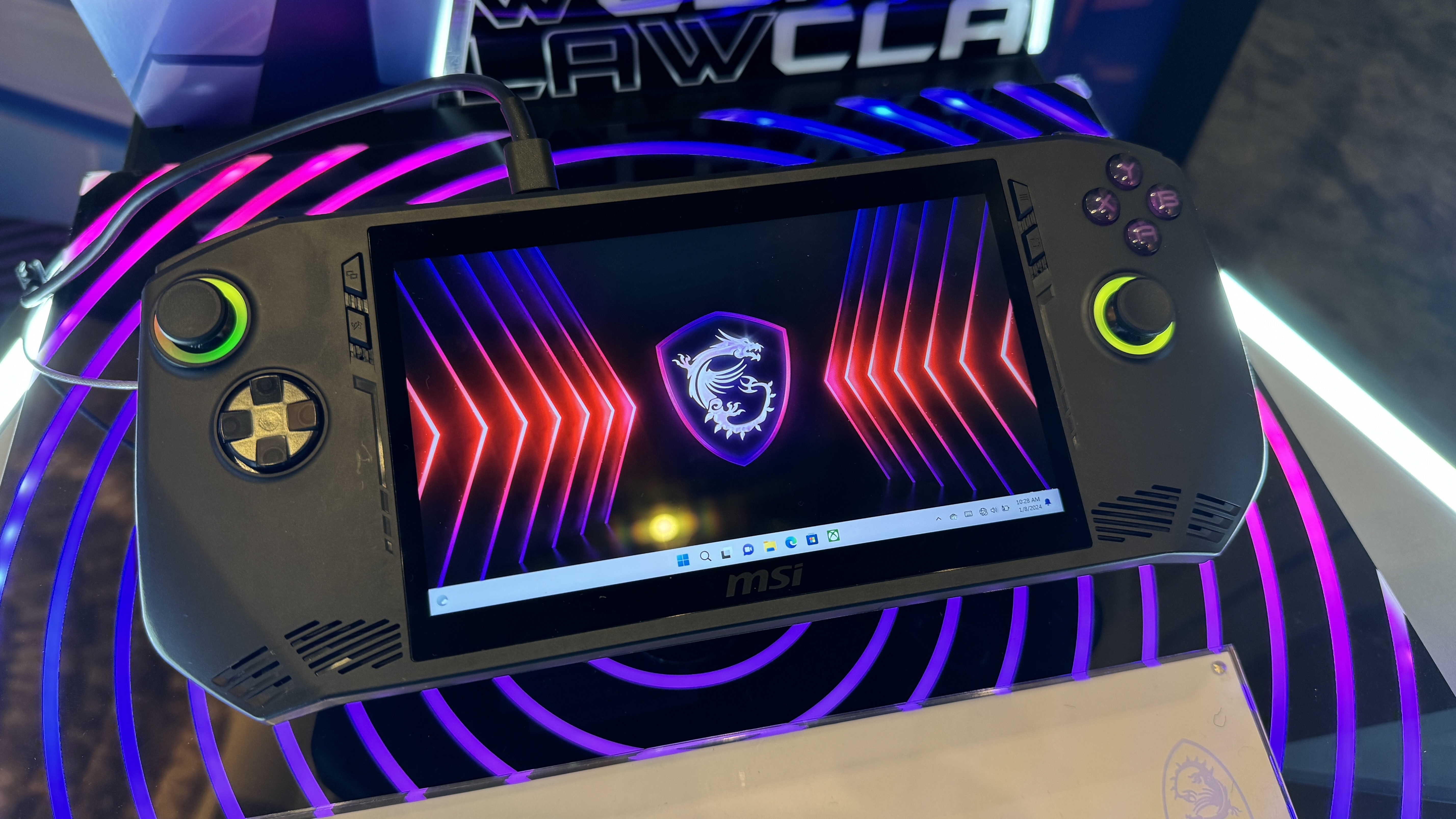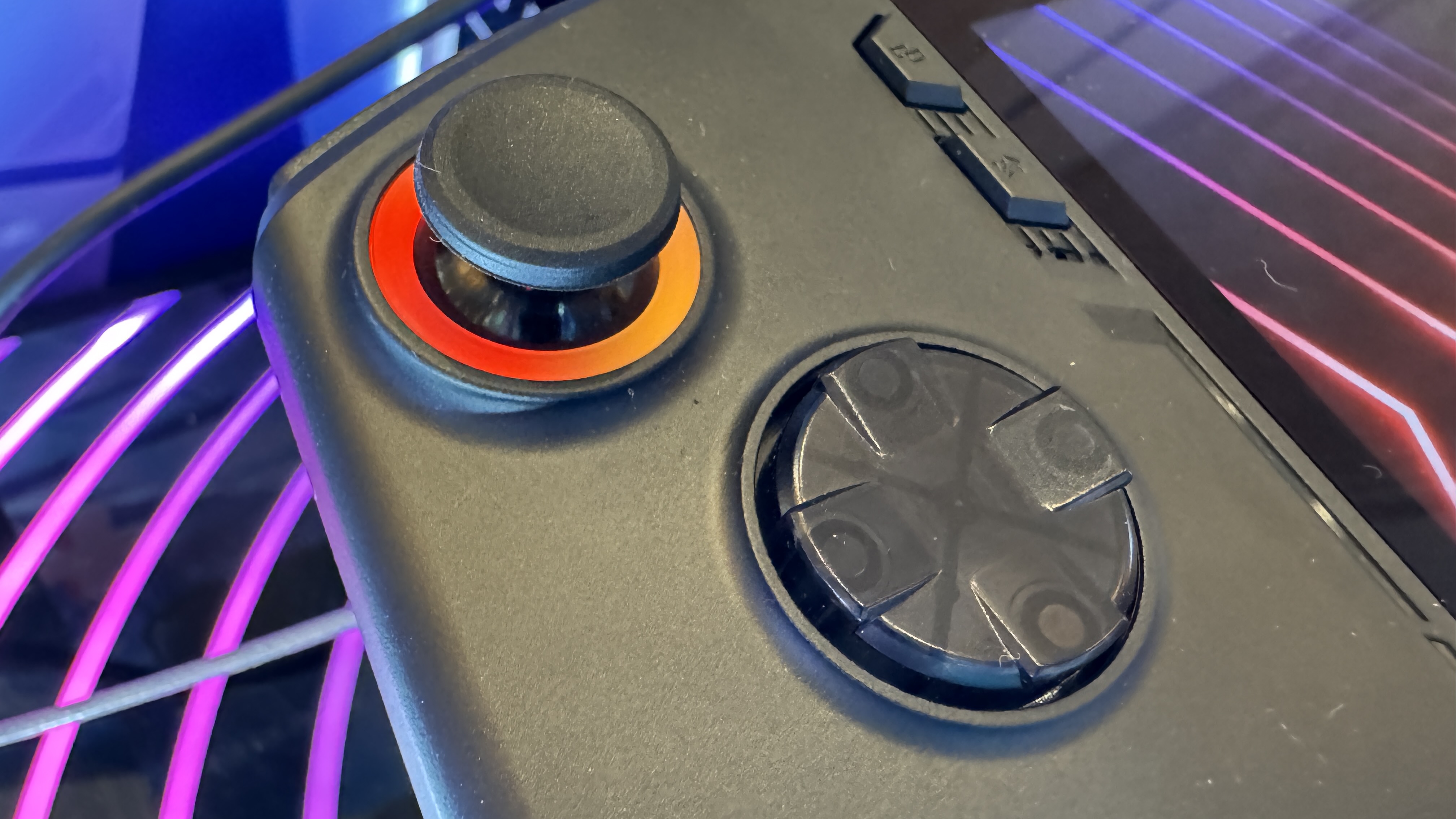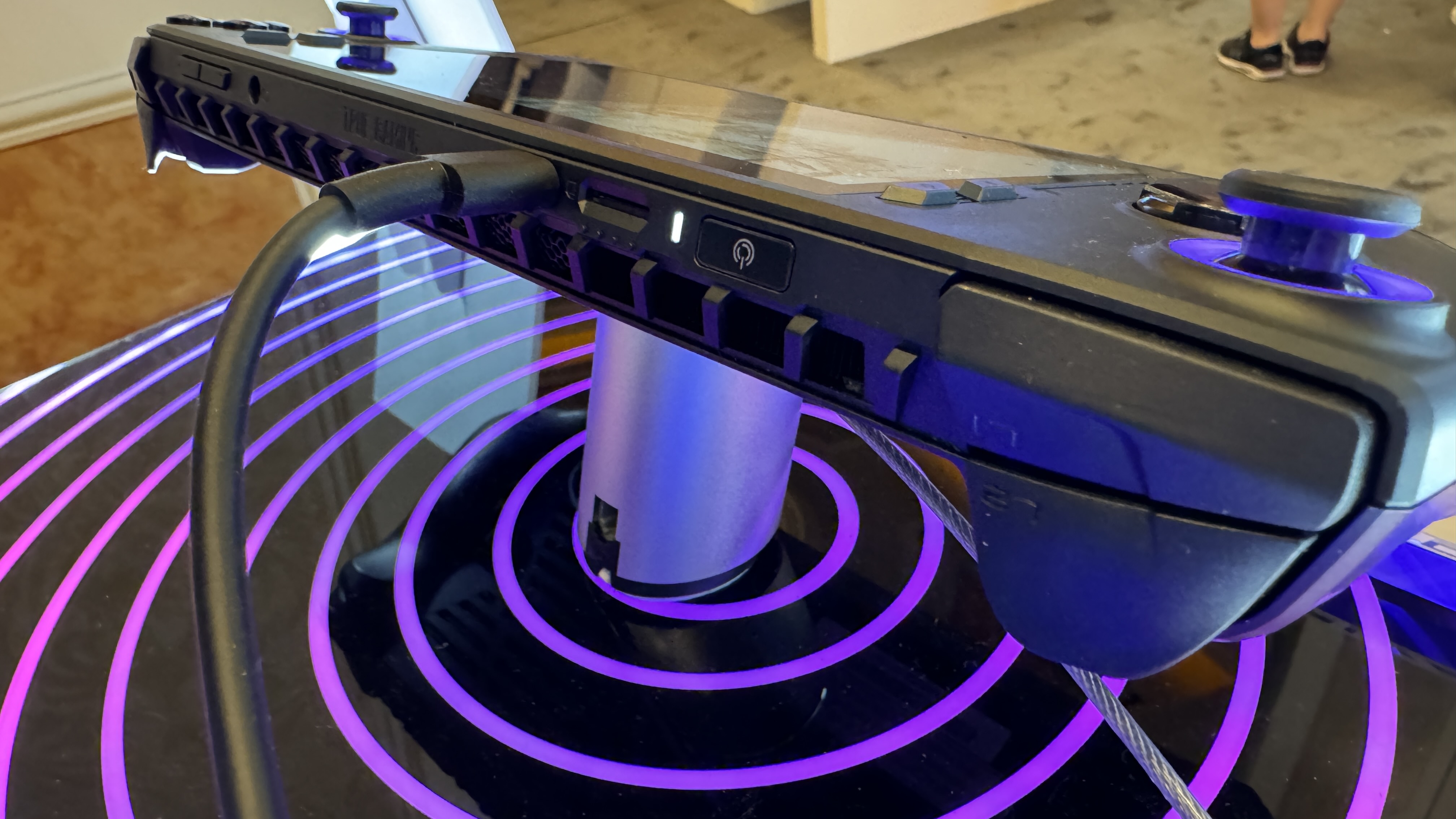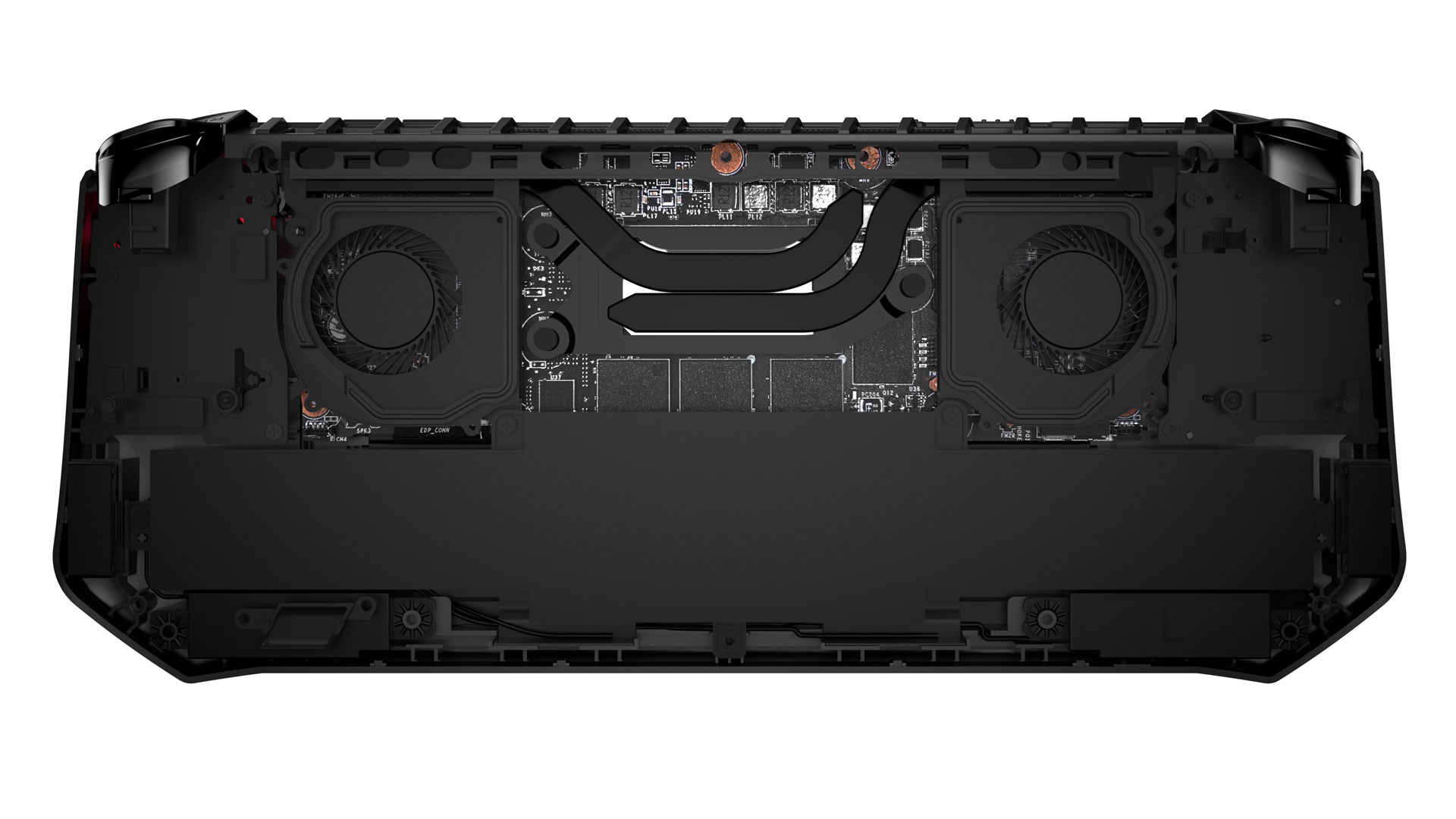MSI Claw is the first gaming handheld to run on an Intel Core Ultra processor with Arc Graphics
The Claw also has a larger battery than competitors.

MSI is jumping into the increasingly competitive handheld gaming sector. At CES in Las Vegas, the company announced the MSI Claw, the first of the modern batch of portable gaming PCs based on an Intel processor. MSI reps tell me that the system should range between $699 to $799 in three configurations when it launches in February or March.
At first glance, it looks quite a bit like the Asus ROG Ally, another Windows-based gaming handheld, one which uses the rival AMD Ryzen Z1 processor. But while that machine came in white, the claw is all stereotypical black and red. Both machines have a 7-inch, 16:9, 1920 x 1080 touchscreen that runs at 120 Hz, and each uses an Xbox-style controller layout with offset joysticks (with the right stick below the A/B/X/Y buttons).
| Header Cell - Column 0 | MSI Claw A1M |
|---|---|
| Processor | Intel Core Ultra 5 135H or Core Ultra 7 155H |
| Graphics | Intel Arc (integrated) |
| Memory | 16GB LPDDR5 |
| Storage | Up to 1TB PCIe Gen 4 |
| Display | 7-inch LCD, 16:9, 1080p, 120 Hz |
| Networking | Intel Killer Wi-Fi 7 BE1750, Bluetooth 5.4 |
| Ports | Thunderbolt 4, microSD, 3.5 mm audio jack |
| Battery | 53 WHr |
| Operating System | Windows 11 |
| Dimensions | 11.57 x 4.6 x 0.83 inches / 294 x 117 x 21.2 mm |
| Weight | 1.49 pounds / 675 grams |
At launch, MSI plans on having two CPU options - the Intel Core Ultra 5 135H and Core Ultra 7 155H. Since the system has 16GB of RAM, the graphics will likely be using Intel's Arc branding. Intel may be leaning on XeSS for performance, as MSI is pointing out that Intel's upscaling technology is available in over 50 games.


Based on the spec sheets, the Claw, at 1.34 pounds, is a bit heavier than the Ally, and will also be slightly taller and wider. MSI claims this is an ergonomic design, and it does appear to have significant grips on the rear. But a few Tom's Hardware editors held the Claw briefly in MSI's demo area, and we all agreed that the plastic used for the main shell felt a little slick and not quite as premium as we'd like. But we'll have to spend more time with the device to pass any real judgement. Also like the Ally, there are two macro keys on the rear and four menu buttons around the screen.
MSI says the buttons are tactile (again, we'll see how it feels in the long run), and that it's using hall effect triggers, and we were told that the joysticks are also hall effect. That said, the top triggers have an angular design that feels a bit odd -- at least at first. It certainly helps distinguish them from the smoother triggers that sit below, but the top triggers jut felt less comfortable to press. Hopefully soon we'll be able to see how this all plays out in an extended gaming session.


All of the ports are along the top of the Claw, including Thunderbolt 4 over USB Type-C, a microSD card reader, and an audio jack. (It would have been nice to see a second Type-C port like on the Lenovo Legion Go, but that was a bigger machine.)
The 53 WHr battery in the Claw is larger than the 49.2 WHr cell in the Legion Go and 40 WHr option in the ROG Ally, as well as the 50 WHr battery in the Steam Deck OLED. Hopefully the mix of the battery and the promises Intel has made about efficiency make for longer battery life than we've experienced on most of these handhelds. In a press release, MSI promised "an impressive 2-hour battery life under full workload conditions," so I'm not terribly hopeful.
As with every Windows 11-based handheld we've seen so far, MSI has built its own software, MSI Center M for the Claw to serve as a game library and launcher, allow you access to launchers like Steam and Epic Games, and jump into settings. It's also where you can set your macros and adjust RGB lighting.
On many of MSI's gaming laptops, I've shrugged off MSI building in an app, called App Player, to run software from the Google Play Store. Here, that could potentially be a good way to play mobile games on the go, assuming they work well with the controller.
There's also going to be a dock designed for the Claw, but we don't have much information about it. While an early image of it shows USB Type-A ports and HDMI, MSI says final I/O will be announced later, presumably with price and a release date.
It's good to see competition continuing to increase in the gaming handheld space, and we're looking forward to getting our own claws on the Claw for testing so that I'll be too busy gaming to make Toy Story jokes to my colleagues. The $699 starting price will make $50 more expensive than the top-end Steam Deck OLED, and it only goes up from there, so MSI and Intel will have to deliver on performance.
Get Tom's Hardware's best news and in-depth reviews, straight to your inbox.

Andrew E. Freedman is a senior editor at Tom's Hardware focusing on laptops, desktops and gaming. He also keeps up with the latest news. A lover of all things gaming and tech, his previous work has shown up in Tom's Guide, Laptop Mag, Kotaku, PCMag and Complex, among others. Follow him on Threads @FreedmanAE and BlueSky @andrewfreedman.net. You can send him tips on Signal: andrewfreedman.01
- Matt Safford
- Sarah Jacobsson PurewalSenior Editor, Peripherals
-
thestryker Unfortunate that they didn't get higher speed memory as that ought to impact IGP performance. Glad it has TB4 though and I'd love to see OCuLink native on one of these handhelds for higher bandwidth docking purposes.Reply
Hopefully between Asus, Lenovo and now MSI that means big OEMs are taking the market seriously and we'll have some innovation. Late this year or next year ought to be really interesting with ARL, LNL and Zen 5 releasing and maybe we'll see some running SteamOS as well.
edit: I also would like to see some of these coming with 24GB DRAM or 32GB if that isn't feasible for some reason. Having at least 6GB, preferably 8GB, memory available for the IGP is really good but only leaving 8-10GB for system isn't ideal. -
sundragon The issue I have with ARC graphics is drivers are not fully baked yet. Intel is getting there but I have a friend who had issues with Starfield because his brand new ARC wasn't supported. They eventually fixed it, I think but only after a backlash. I appreciate the attempt from Intel and more competition means Nvidia may lower their prices (naw LOL) but I'd much prefer AMD/Nvidia graphics that have baked drivers from people who are seasoned.Reply
What do you all think?
